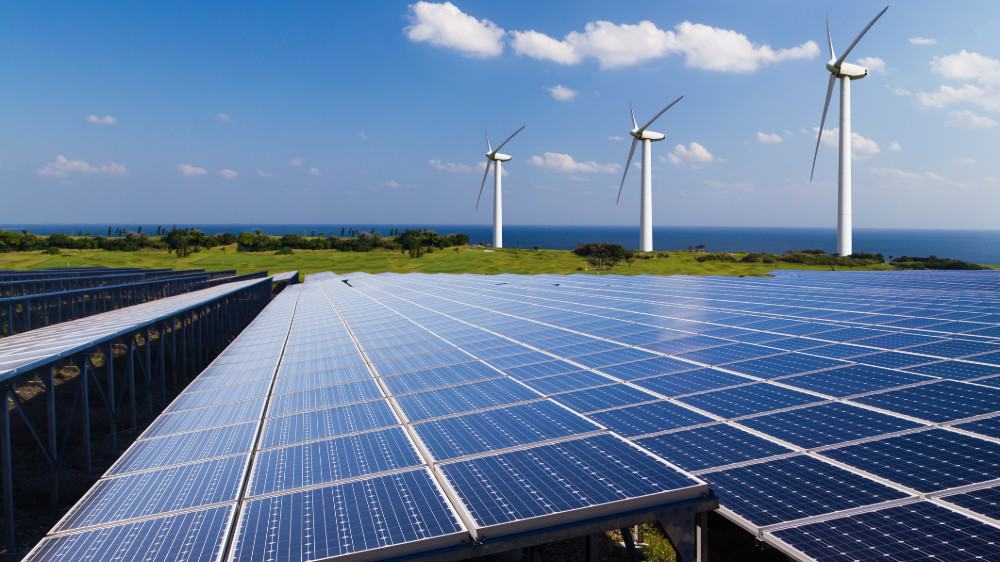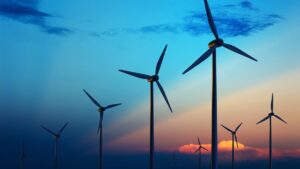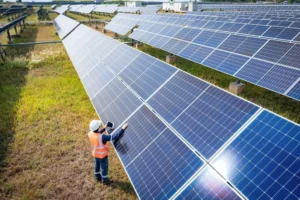Clean energy has grown from a niche to a global phenomenon in recent years. As climate change intensifies and the world moves away from fossil fuels, breakthroughs in clean energy are transforming the production and use of electricity. These inventions are reducing greenhouse gas emissions, boosting economic growth, and promoting energy independence. Understanding the latest developments in clean energy can reveal how humanity can ensure a sustainable future.
Improving Solar Panel Efficiency:
Solar power is the cornerstone of the clean energy movement, but advanced solar panel technology is making it more efficient and accessible. New technologies such as perovskite solar cells are more efficient and cheaper to produce than silicon-based solar panels. Print. These cells are inexpensive and easy to operate, making them easier to integrate into a variety of surfaces. The latest solar panels can convert more sunlight into electricity even in low-light conditions, making solar power more effective in a variety of climates.
Wind Turbines of the Future:
Innovations in turbine design are helping to make wind power one of the fastest-growing sources of clean energy. Modern wind turbines are larger, more efficient, and can operate at lower speeds. These technological advances allow offshore wind farms to use floating turbines in deeper water, which can create stronger, more stable winds. These advances make wind energy more reliable and affordable and provide clean, abundant electricity for homes and businesses.
Green Hydrogen: A Game Changer
Hydrogen has long been touted as a clean energy carrier, but it has proven difficult to produce without fossil fuels. Green hydrogen, produced by electrolysis of water using renewable energy, is a breakthrough. It emits no carbon dioxide, making it a clean fuel. Fuel cells can power cars, heat buildings, and store energy in the form of green hydrogen. Global investment in green hydrogen infrastructure reflects the trend toward cleaner industrial processes and long-term energy storage.
Advances in Battery Storage:
Renewable energy development has been hampered by energy storage technology, but battery technology is improving. Solid-state and lithium-sulfur batteries have higher energy density, faster charging times, and longer lifespans than lithium-ion batteries. These innovations improve the storage of solar and wind energy, making renewable energy more stable. The transition to an electricity grid based on intermittent energy sources such as solar and wind requires more efficient battery storage systems.
Breakthroughs in Wave and Tidal Energy:
Tidal and wave energy can generate large amounts of renewable energy from the ocean. Recent technologies can better harness these energies. New turbines and underwater kites are being developed to harness ocean currents that are more reliable than wind or solar energy. These technologies are being developed and deployed in coastal areas to produce renewable energy. Tidal and wave energy can help coastal areas reduce the use of fossil fuels and provide sustainable electricity.
Innovation in Smart Grids:
As clean energy grows, smart grids are emerging, which use digital technology to monitor and manage the flow of electricity. These grids can integrate renewable energy more efficiently and reduce energy waste by adapting to supply and demand in real time. Smart grids use artificial intelligence and machine learning to predict electricity consumption, manage load, and respond more quickly to outages, creating a more resilient and sustainable energy system for a growing population and economy.
Waste-to-Energy and Bioenergy:
Bioenergy, which converts organic feedstocks into electricity, heat, or biofuels, is also experiencing a wave of innovation. Waste-to-energy plants convert municipal and agricultural waste into electricity, minimizing landfills and emissions. Newer, more efficient, and less polluting technologies produce cleaner energy from environmentally degraded feedstocks. These systems benefit regions where renewable resources are scarce.
Carbon Capture and Utilization:
Clean energy can reduce emissions, but technologies to capture and reuse carbon dioxide are key. Carbon capture and utilization (CCU) can convert carbon dioxide emitted by power plants or industry into useful products such as fuels, building materials, or chemicals. This approach minimizes greenhouse gas emissions and generates economic value. Innovations in CCU make the process cheaper and more scalable, which is an important tool in the fight against climate change.
Electrification of Transportation:
Advances in clean energy are transforming transportation. Electric vehicles (EVs) are becoming increasingly affordable and efficient, with longer ranges and faster charging. Buses, trains, and planes are also going electric. This change is being made possible by improvements in infrastructure, such as renewable energy charging networks. The electrification of transportation reduces oil consumption, pollutants, and pollution, making cities and ecosystems cleaner.
Advances in Geothermal Energy:
New technologies are driving the development of geothermal energy, which harnesses the Earth’s heat. By artificially stimulating rock formations to form heat reservoirs, enhanced geothermal systems (EGS) can be built in places that are not suitable for them. Unlike solar and wind, these systems can provide continuous power. As drilling and extraction methods improve, geothermal energy could become a major source of clean energy.
Conclusion:
Innovative clean energy solutions are increasingly changing the way we power the world. From solar panels and wind turbines to green hydrogen and smart grids, these innovations are building a low-carbon future. As technology advances, clean energy will become more efficient, convenient, and integrated into everyday life. Embracing these changes will help improve the environment, economic growth, energy security, and quality of life for future generations.
FAQs:
1. Which clean energy source is currently the most promising?
Solar energy is one of the most promising renewable energy sources due to its availability, falling costs, significant efficiency, and technological advancements.
2. How is green hydrogen different from regular hydrogen?
Unlike fossil fuels, green hydrogen is produced by splitting water into hydrogen and oxygen using renewable energy, with zero carbon emissions.
3. Are electric vehicles good for the environment?
Electric vehicles, especially those powered by renewable electricity, have no tailpipe emissions, which reduces pollution.
4. Why is battery storage for renewable energy so important?
Battery energy storage systems can store and use renewable energy when the sun isn’t shining or the wind isn’t blowing, ensuring a reliable energy supply.
5. How do smart grids work?
Smart grids integrate renewable energy, reduce waste, and improve reliability and response time by managing electricity digitally.




